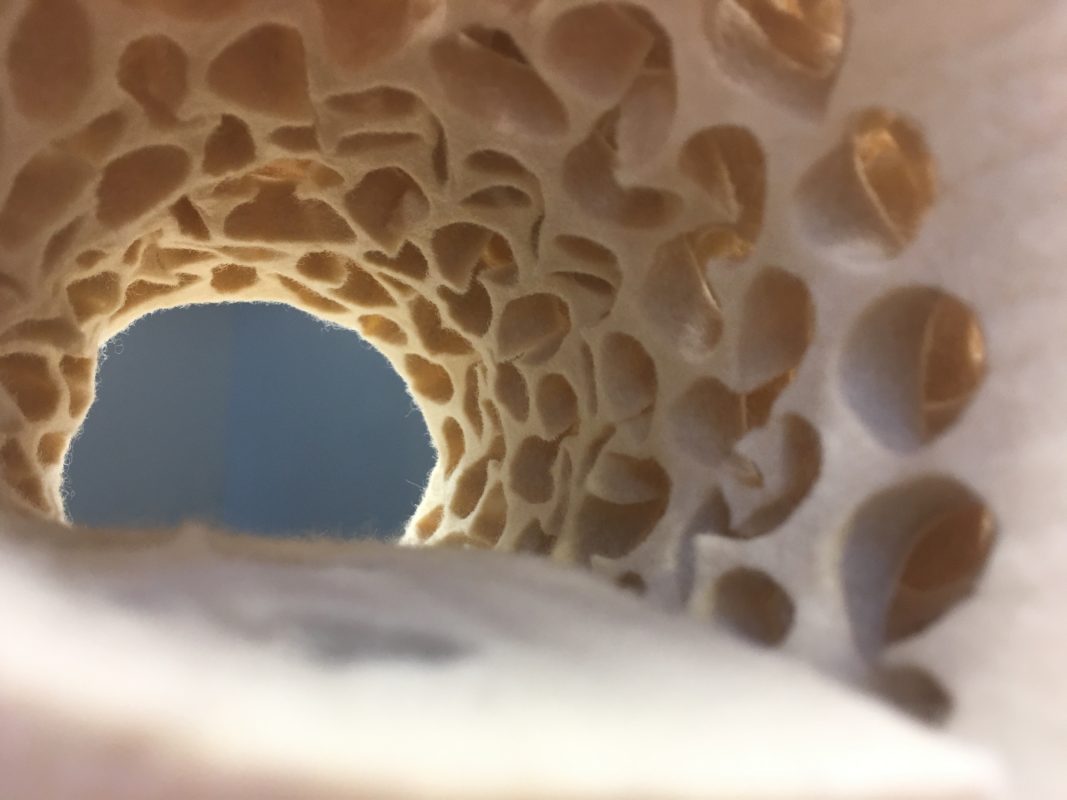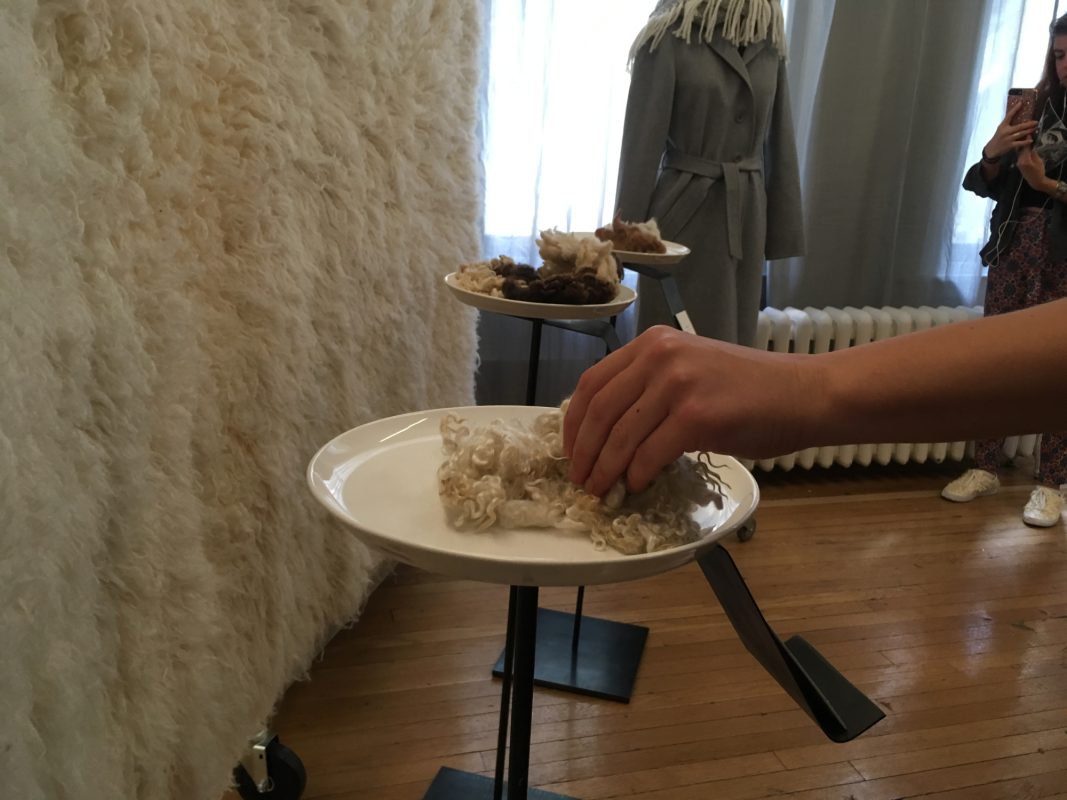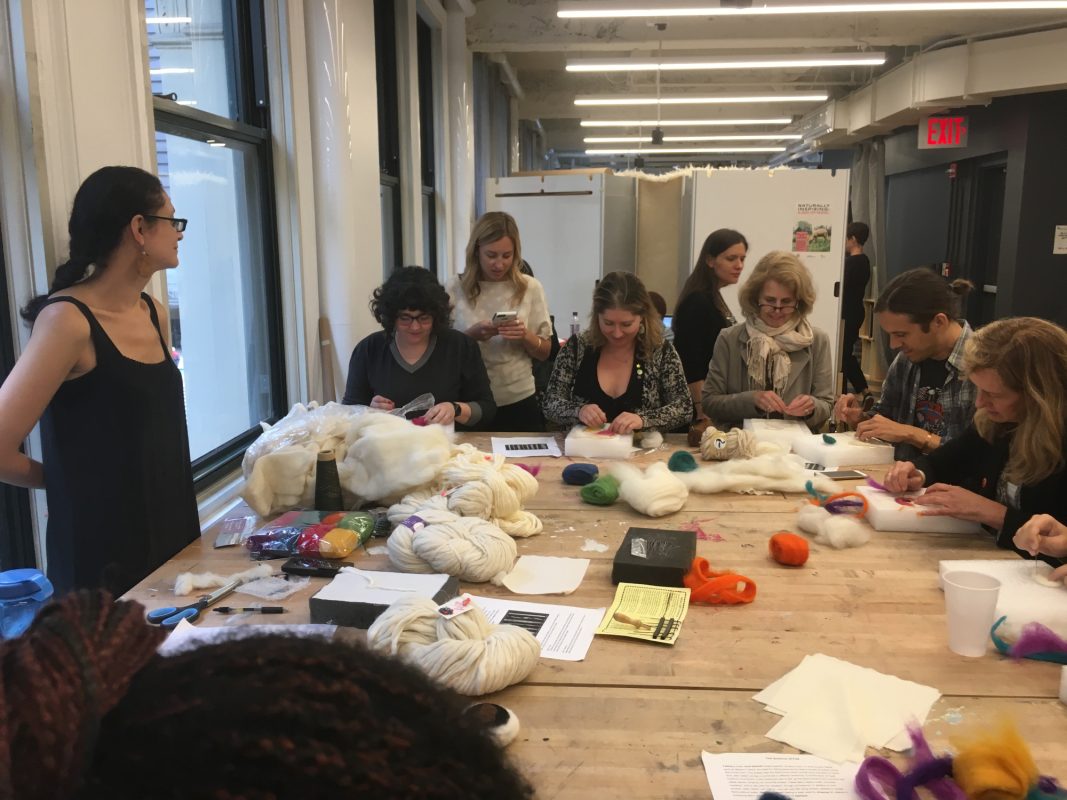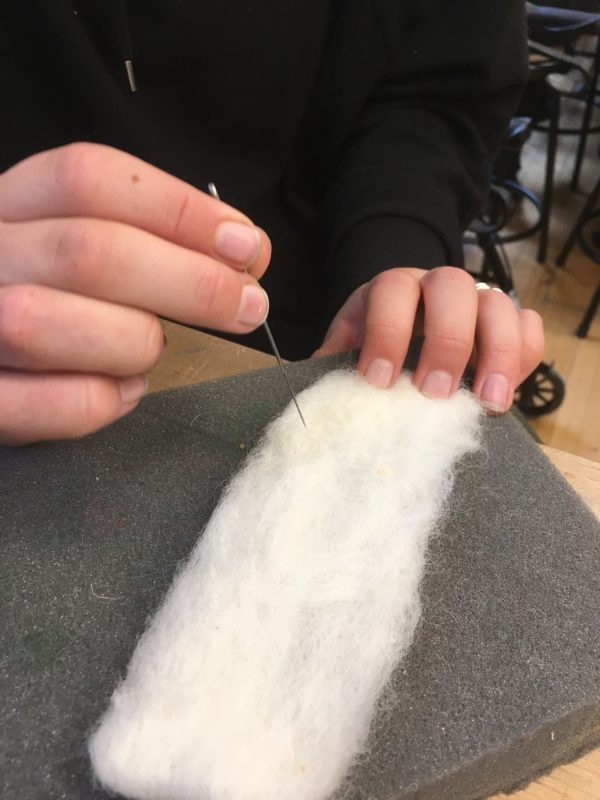
It was a perfect day for the event, suddenly cool again after a week of late summer heat; it seemed most people in attendance had unearthed their favorite woolen sweaters for the occasion. Of course, wool isn’t just for wearing, and the immersive space at the center of the event was a tactile display of this fact.
Walls, draped in white wool flokati rugs, formed a semicircle around a giant table. The table was covered in thick swaths of cream-colored felt full of holes. The holes had been punched out for use as felt washers , and what was left was this beautiful honeycombed scrap, begging to be touched.



“It’s hard to put into words, but it’s a kind of knowledge that lies in the fingertips.”
Displayed were swatches of Alpaca and Merino dyed in vibrant blues and greens and orange. Some worsted and soft to the touch, others woolen, itchy and rough. There were big, glass jars filled with unwashed wool that left a waxy, oily feeling on your finger tips and more jars brimming with unscoured wool, still full of prickly burrs and other vegetative matter. In one jar there was a tangle of thick, musky wool and a tag hung from the lid reading: “DARE TO SMELL”. There were felt tipped drum mallets; dry board erasers; indigo leaves and their deep blue powder for dying; paint rollers; fine strings and thick yarns in every color. Hanging from the ceiling and piling into thick folds on a smaller table was a long grey strip of wool insulation, and on a series of different plates sat samples of raw wools, labeled by name and region, collected by Laura Sansone of Textile Lab, from local animals raised on New York State farms. There were Icelandic Roving sheep and Llama; curly Mohair; oily, unwashed Cormo; and brown and white Alpaca.

The day began with an informative lecture from Angela Domsitz, Product and Educator Extension manager from the Woolmark Company in America. She laid out the steps of manufacturing wool, from the shearing of the sheep to the weaving process, and presented the benefits of wool opposed to synthetic materials.
The afternoon, dedicated to workshops where attendees could learn the basics of weaving, indigo dyeing, knitting and felting, was a hands-on affair. The lulling sound of needles punching tiny holes in clumps of wool to make felt could be heard throughout the entire studio. Maya Valladares of the Making Center, who led the workshop, described the process as meditative and stress relieving.


After the workshops, we gathered for a panel discussion led by Dr. Timo Rissanen, Assistant Professor of Fashion Design and Sustainability at Parsons. Joining Dr. Rissanen was Glen Cauffmann, a regional wool grower, Jacob Long, a Regional Manufacturer and CEO of American Woolen Company, Marcia Patmos, an award winning designer, Laura Sansone, Founder and Design Consultant of Textile Lab and Assistant Professor at Parsons School of Design and Angela Domsitz of The Woolmark Company.
Hundreds of thousands of microfibers come out in a single load of laundry and infiltrate our water.
They addressed the environmental and economic problems we face today as a result of the increased use of synthetic materials. Hundreds of thousands of microfibers come out in a single load of laundry and infiltrate our water. Even the process of descaling natural wool uses certain polymers and chlorination that are unsafe for the environment overtime.
Glen Cauffman discussed the state of agriculture today and described how we’ve become solely focused on commodity, which ultimately devalues a product. Once a product is sold to market, it loses its identity as a commodity. He talked further about the negative impact the American demand for efficiency has on farming. Farmers have little incentive to employ best conservation practices and yield a superior product because they receive no recognition for their efforts. Their wool is piled into a truck along with everyone else’s, so by the time it reaches the manufacturers, no one knows it came from a farm that produces, processes and distributes their product in an ecologically humane, responsible and sustainable manner. The panelists agreed we must return to small-scale practices and close the gap between designers, farmers and manufacturers. If designers could directly speak with farmers and actually feel the quality of the wool they’re buying, the system would undoubtedly begin to change. As. Timo Rissanen said, “it’s hard to put into words, but it’s a kind of knowledge that lies in the fingertips,” and I believe we all got to experience the importance of this tactile knowledge at “A Day of Wool”.
Read More
Join Our Academic Network
Get Access to our carefully researched and curated academic resources, including model syllabi and webinars. An email from an academic institution or a .edu email address is required. If your academic institution does not use .edu email addresses but you would like to join the network, please contact healthymaterialslab@newschool.edu.
Already have an account? Log in